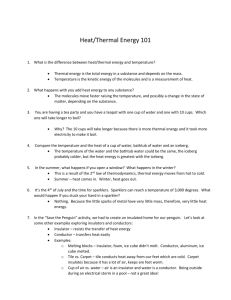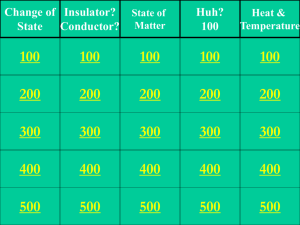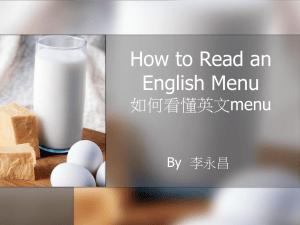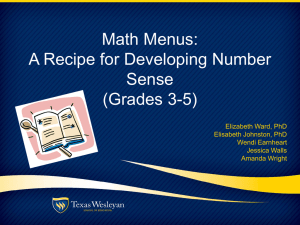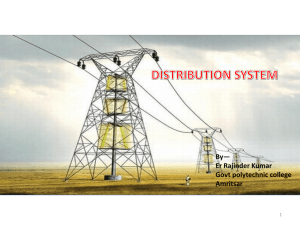FINAL CONDUCTORS AND INSULATORS
advertisement
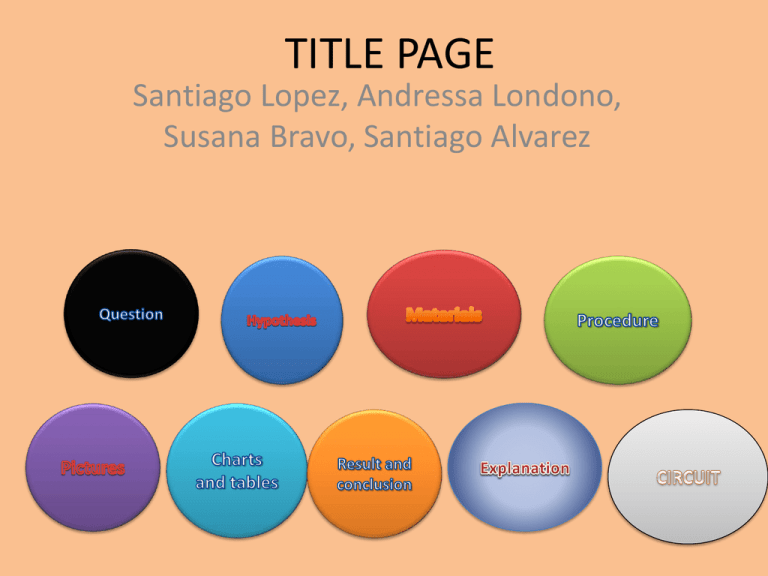
TITLE PAGE Santiago Lopez, Andressa Londono, Susana Bravo, Santiago Alvarez QUESTION Which objects will conduct electricity and which objects won’t conduct electricity? Menu objects HYPOTHESIS conductor marble x carrot x Apple x Medal x Watch x Toothbrush Earrings insulator x x Pony tail x Bracelet x zipper x ballon x lemon x fork x nailfile x glue x Menu MATERIALS •Light bulbs •Wires •Batteries •15 objects •Camera to take pictures Menu PROCEDURES 1. Create a closed circuit using the light bulb, batteries, and wires to make sure all of the materials work. 2. Take one of the objects and put it in the circuit to see if it is a conductor or insulator. If the light bulb lights up, it is a conductor. If the light bulb doesn't light up, it is an insulator. 3. Write the name of each object in the chart and put an x in the conductor or insulator columns. 4. Do this procedure for all 15 objects. Menu PICTURES Menu CHARTS AND TABLES objects conductor insulator Hypothesis marble x yes carrot x no Apple x no Medal x Watch x Toothbrush Earrings x No and yes x yes x Pony tail Bracelet yes yes x x yes yes zipper x no ballun x no lemon x no fork x yes nailfile x yes glue x yes Menu RESULTS AND CONCLUSION Conductor insulator Medal Watch Earrings marble bracelet Carrot Fork Apple watch Toothbrush Zipper Balloon Lemon Nail file Glue ponytail Menu EXPLANATION Some materials are conductors because metal conducts electricity. Some materials are insulators because electrons can’t pass. menu The circuit diagram menu
